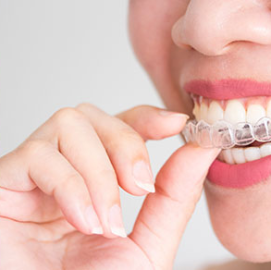
Introduction
Invisalign has emerged as a popular preference for those trying to straighten their teeth discreetly. Unlike traditional metallic braces, Invisalign makes use of a sequence of clear, detachable aligners that, step by step, float teeth into their favoured positions. But with this revolutionary technology comes a higher charge tag, leaving many ability customers questioning: Does dental insurance commonly cover Invisalign remedy?
Understanding Invisalign Coverage
The short answer is that it relies upon your dental coverage plan. Some insurance providers offer partial coverage for Invisalign, even as others won’t cover it in any respect. The key to knowing whether your remedy is covered lies within the information about your particular coverage.
Most dental coverage plans that encompass orthodontic benefits will cover a part of the charge of conventional braces. However, the cause that Invisalign is often taken into consideration as a greater cosmetic choice is that it would need to be absolutely blanketed under identical orthodontic blessings. This is why it’s crucial to examine your insurance plan cautiously or speak straight away along with your insurance company to recognize what’s included.
Orthodontic Benefits and Limitations
If your dental insurance plan does offer orthodontic coverage, it commonly applies to children and adults. However, there are frequently age boundaries. For instance, a few plans provide the handiest cover orthodontic treatment for dependents under 18.
Moreover, many coverage plans have an entire lifestyle, maximum for orthodontic insurance, normally ranging between $1,000 and $three 000. This technique is that once this amount is used up, the insurance will now not make contributions to any greater orthodontic remedies, which includes Invisalign.
Differences in Coverage for Invisalign vs. Traditional Braces
Even if your insurance covers orthodontic remedies, there needs to be assurance that it will cover Invisalign in particular. Some insurers categorize Invisalign as a “luxurious” or “optional” remedy, except for it from insurance or providing a smaller compensation than traditional metal braces.
That stated, greater insurance agencies are increasingly spotting the call for Invisalign and are starting to offer comparable insurance. It’s always an amazing idea to ask your organization for an immediate evaluation of the two alternatives. This lets you apprehend whether or now not opting for Invisalign will bring about drastically higher out-of-pocket fees.
Out-of-Pocket Costs
Even with insurance coverage, it is likely that you will have to pay out of pocket for a portion of your Invisalign remedy. On common, Invisalign can value everywhere from $3,000 to $8,000, depending on the complexity of the case and the duration of remedy if your coverage covers 50% of the fee, as much as $2,000, for instance, you may, despite the fact that you are responsible for the final stability.
Additionally, there can be exceptional prices related to your treatment, consisting of consultation prices, X-rays, or retainers, which may additionally or may not be covered via the use of insurance. It’s important to invite your orthodontist for a full breakdown of all of the prices and make sure with your insurance corporation what is going to be covered.
How to Maximize Your Insurance Benefits
To get the maximum from your dental coverage, comply with the steps:
Review Your Plan: Check your insurance files or contact your coverage company to get focused statistics about your orthodontic advantages. Look for terms like “easy aligners” or “Invisalign” to peer if they are especially noted.
Ask Questions: Contact your insurance organization and ask specific questions. For example:
“Is Invisalign blanketed below my orthodontic advantages?”
“What is my lifetime most for orthodontic treatment?”
“Are there age barriers for orthodontic coverage?”
“Do I want a referral from a dentist for insurance?”
Get a Pre-Treatment Estimate: Your orthodontist can provide a detailed estimate that you may put up to your coverage corporation for a pre-treatment determination. This will offer you an idea of what will be protected and what you may be charged for paying.
Consider a Flexible Spending Account (FSA) or Health Savings Account (HSA): If your insurance doesn’t cover Invisalign or satisfactorily gives partial coverage, you can use finances from an FSA or HSA to pay for the treatment. This money owed allows you to set apart pre-tax greenbacks for scientific expenses, which may help reduce the monetary burden.
Look for Payment Plans: Many orthodontists offer charge plans to assist in making Invisalign braces much less steeply-priced. You may be capable of unfolding the charge in the course of your treatment, making it less difficult to control.
Conclusion
While Invisalign braces can be an enormous investment, the outcomes often communicate for themselves. Whether or no longer your dental insurance covers the Invisalign treatment is predicated upon your precise insurance. It’s important to do your homework, ask the proper questions, and discover all the options to make a knowledgeable selection. With the proper approach, you can acquire the smile you’ve got continuously wanted without breaking the monetary organization.







